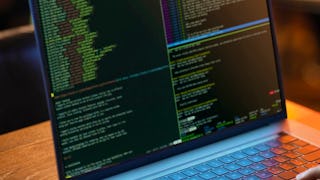This course will cover the fundamental concepts and philosophy behind free and open source software (FOSS). The course will discuss open source and free software licensing; open source business strategies and impact; FOSS utilization in the enterprise; and development methodologies. Students will learn to set up and configure an industry-standard open source operating system, including system installation, and basic system administration; system architecture; package management; command–line commands; devices, filesystems, and the filesystem hierarchy standard. Also addressed are applications, shells, scripting and data management; user interfaces and desktops; administrative tasks; essential system services; networking fundamentals; and security, as well as support issues for open source software. Multiple distributions are covered with emphasis on the two leading enterprise distribution families.

Enjoy unlimited growth with a year of Coursera Plus for $199 (regularly $399). Save now.

Introduction to Open Source Software
This course is part of multiple programs.


Instructors: Jeremy Hajek
Included with
(10 reviews)
Recommended experience
What you'll learn
OS troubleshooting - Path Permission and Dependencies
Bash Language Shell Scripting
Skills you'll gain
- Command-Line Interface
- Open Source Technology
- System Configuration
- Operating System Administration
- Scripting
- Network Security
- Bash (Scripting Language)
- Linux Commands
- General Networking
- Ubuntu
- Linux Administration
- Shell Script
- Database Management
- Unix Shell
- Package and Software Management
- Operating Systems
- Unix
- Linux
- File Systems
- Red Hat Enterprise Linux
Details to know

Add to your LinkedIn profile
33 assignments
See how employees at top companies are mastering in-demand skills

Build your subject-matter expertise
- Learn new concepts from industry experts
- Gain a foundational understanding of a subject or tool
- Develop job-relevant skills with hands-on projects
- Earn a shareable career certificate

There are 9 modules in this course
Welcome to Introduction to Opensource Operating Systems! Module 1 offers a deep dive into the rich history of the Unix operating system, covering seven pivotal periods from its inception in 1969 up to today. Students will explore the developments and the philosophy that shaped Unix during its formative years and how it has continued to influence modern computing paradigms. Emphasis is placed on recognizing the seminal contributions of Unix's key architects and contributors, providing an understanding of the system's enduring legacy in today's technological landscape.
What's included
15 videos7 readings4 assignments1 discussion prompt
This module provides a comprehensive exploration of the Linux ecosystem, beginning with the function and features of package managers and App stores, which streamline software installation and management. Students will understand the roles of window managers and desktop environments in shaping user interaction, as well as the intricacies of display protocols like X and Wayland. The course demystifies the various types of desktop Linux, delves into the practicalities of compiling source code, and explains the concept and diversity of Linux distributions. Comparing the major distribution families, the module also equips students with the skills to utilize virtualization platforms for deploying different Linux distributions.
What's included
23 videos6 readings4 assignments
Module 3 turns the spotlight on the powerful capabilities of the Linux command line, providing learners with the expertise to leverage the significance of shell meta-characters in expanding shell functionalities. This shows the power of text commands and the major concept of shell scripting in Linux. We will introduce you to the grep command for intricate search operations and replacements using shell meta-characters as well. Students will grasp the essentials of input/output redirection and using Linux pipes. We will be focusing on the nuances of standard input, output, and error. Key concepts such as file permissions, and security nomenclature will be explained. The course also covers the role of the Linux Shell within the OS and the use of absolute and relative paths, all while demystifying the structure of the Linux Filesystem for efficient system navigation and management.
What's included
16 videos6 readings4 assignments
Module 4 empowers students with the skills to automate routine tasks in Linux using shell scripts. We will incorporate positional parameters and control structures to give your scripts logic. Students will learn to declare and understand the scope of system environment variables. The course also explains the manipulation of the system PATH, modifications to user profiles, and the automation of tasks through shell scripting. Additionally, students will become familiar with the capabilities of the vi(m) editor, and distinguish between stream editors and text editors, laying a solid foundation for advanced text processing and system administration in a Linux environment.
What's included
12 videos5 readings4 assignments
Module 5 provides a deep understanding of Linux system administration, starting with the sudo command's crucial role in maintaining root user security. Students will learn the processes for creating and managing user accounts, as well as the significance and analysis of system logs for maintaining system health and security. The coursework introduces essential system tools for ongoing monitoring and reporting, and presents the "3Ps" (Path, Permission, and Dependencies) troubleshooting methodology. Additionally, the module covers secure remote access techniques, ensuring students can administer Linux systems effectively while upholding stringent security standards.
What's included
15 videos6 readings4 assignments
This module focuses on the Linux boot process by breaking it down into its three fundamental phases, providing a clear explanation of what occurs during each stage. Students will compare the traditional SysVinit system with the newer systemd init system, gaining insight into their differences, functionalities, and service management techniques. Focusing on system tools for process examination, this module clarifies the purposes of Linux systemd service files. It also delves into the structure and management of filesystems, including a comparison of different Linux filesystems, the mechanics of virtual disk creation and attachment, and the fundamentals of Logical Volume Management. Additionally, the course covers efficient command-line tools for compression, archiving, disk utilization, and mounting, equipping students with practical skills for comprehensive system management.
What's included
28 videos5 readings4 assignments
This module equips students with the essential knowledge to configure, manage, and troubleshoot basic network settings on Linux operating systems. The course also provides introductions to configuring and deploying major webserver platforms. Students will learn to install and configure popular opensource SQL databases, gaining practical database management skills. And lastly, this module covers the selection and configuration of desktop-based firewalls and Linux networking.
What's included
20 videos5 readings4 assignments
This module addresses the critical role of automation in Linux systems, outlining the challenges it solves by streamlining and simplifying complex tasks. Students will be introduced to the current landscape of orchestration and automation tools, with a particular focus on the contributions of Hashicorp to the field. They will learn the processes for automating the installation of Linux operating systems and discover solutions for deploying complete applications using automation tools. Additionally, the course delves into the concept of secrets management within automated environments, teaching students how to securely handle sensitive information in an automated and scalable manner.
What's included
23 videos5 readings4 assignments
This module contains the summative course assessment that has been designed to evaluate your understanding of the course material and assess your ability to apply the knowledge you have acquired throughout the course. Be sure to review the course material thoroughly before taking the assessment.
What's included
1 assignment
Earn a career certificate
Add this credential to your LinkedIn profile, resume, or CV. Share it on social media and in your performance review.
Build toward a degree
This course is part of the following degree program(s) offered by Illinois Tech. If you are admitted and enroll, your completed coursework may count toward your degree learning and your progress can transfer with you.¹
Instructors


Offered by
Explore more from Software Development
 Status: Preview
Status: Preview Status: Preview
Status: PreviewIllinois Tech
 Status: Free Trial
Status: Free TrialThe Linux Foundation
 Status: Preview
Status: Preview
Why people choose Coursera for their career





Open new doors with Coursera Plus
Unlimited access to 10,000+ world-class courses, hands-on projects, and job-ready certificate programs - all included in your subscription
Advance your career with an online degree
Earn a degree from world-class universities - 100% online
Join over 3,400 global companies that choose Coursera for Business
Upskill your employees to excel in the digital economy
Frequently asked questions
To access the course materials, assignments and to earn a Certificate, you will need to purchase the Certificate experience when you enroll in a course. You can try a Free Trial instead, or apply for Financial Aid. The course may offer 'Full Course, No Certificate' instead. This option lets you see all course materials, submit required assessments, and get a final grade. This also means that you will not be able to purchase a Certificate experience.
When you enroll in the course, you get access to all of the courses in the Specialization, and you earn a certificate when you complete the work. Your electronic Certificate will be added to your Accomplishments page - from there, you can print your Certificate or add it to your LinkedIn profile.
Yes. In select learning programs, you can apply for financial aid or a scholarship if you can’t afford the enrollment fee. If fin aid or scholarship is available for your learning program selection, you’ll find a link to apply on the description page.
More questions
Financial aid available,

